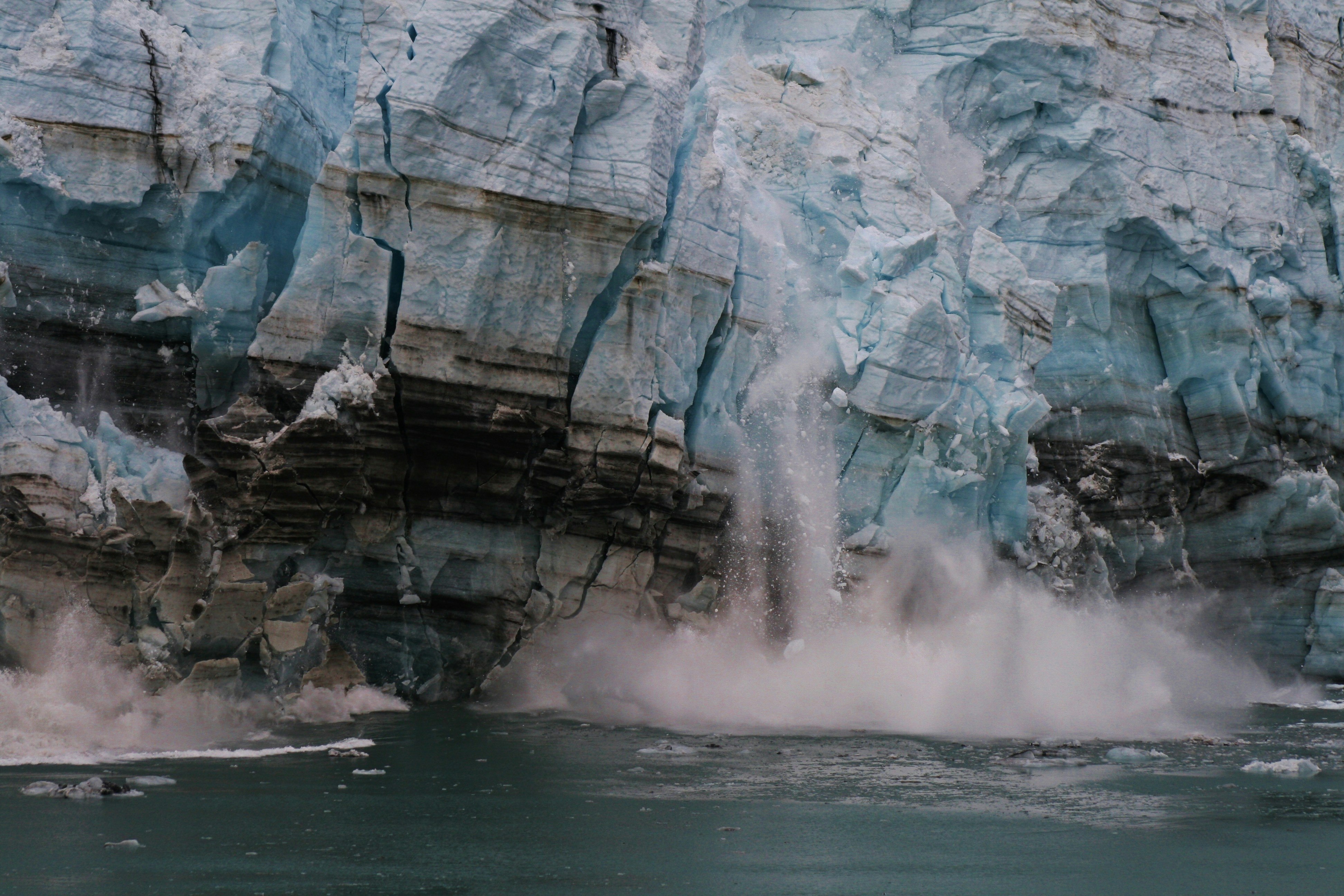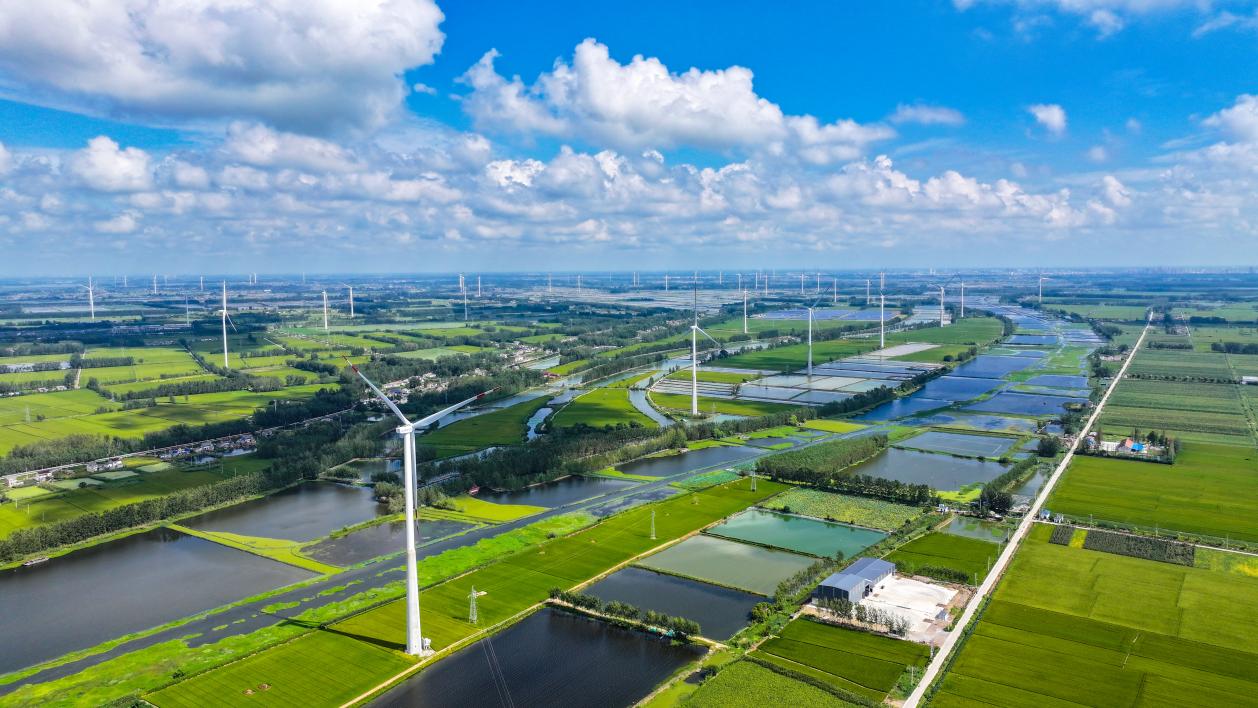Unsettling photos show the effects of climate change projected onto our everyday lives – CNN
/https://media.globalcitizen.org/4b/33/4b33d895-96c8-432f-aa11-03fdee3266a1/somalia_kenya_floods_ap.jpg?#)
Report on “Atlas of the New World”: A Photographic Study of Climate Change Impacts Aligned with Sustainable Development Goals
Introduction: Visualizing Future Scenarios to Promote Climate Action
The photography project “Atlas of the New World,” by Edoardo Delille and Giulia Piermartiri, serves as a visual report on the projected consequences of the climate crisis. By merging scientific data with unsettling imagery, the project aims to make the abstract forecasts of environmental change tangible, thereby urging immediate and comprehensive action in line with the United Nations’ Sustainable Development Goals (SDGs). The work focuses on six climate-vulnerable regions, illustrating future scenarios of desertification, rising sea levels, and wildfires to underscore the gravity of the situation if global climate targets are not met.
Project Methodology and Data Sources
The photographers employed an analog projection technique to superimpose images of potential future environmental conditions onto present-day scenes. This method provides a stark visual contrast between current life and a scientifically-predicted future. The project’s credibility is reinforced by its reliance on authoritative data, primarily sourced from the United Nations Environment Programme (UNEP) and localized environmental databases. This data-driven approach ensures the visual narratives are grounded in scientific reality, directly supporting the evidence-based policy-making encouraged by the SDGs.
Thematic Analysis in the Context of Sustainable Development Goals
SDG 13: Climate Action & SDG 14: Life Below Water
Case Study: The Maldives
The series on the Maldives directly confronts the threats of rising sea levels, a critical concern for SDG 13 (Climate Action) and SDG 14 (Life Below Water). As the world’s lowest-lying nation, its existence is under threat.
- Projected Impact: Scientific reports cited in the project predict that by 2050, 80% of the Maldives could become uninhabitable due to rising sea levels.
- Visual Representation: Images depict local residents in their daily lives while scenes of underwater life are projected over them, illustrating a future where their homes are submerged. This powerfully communicates the urgent need for climate adaptation and mitigation strategies to protect coastal communities and marine ecosystems.
SDG 15: Life on Land
Case Studies: California and Mont Blanc
The project’s chapters on California and Mont Blanc highlight the degradation of terrestrial ecosystems, a core focus of SDG 15 (Life on Land).
- California: The work visualizes the projected 77% increase in wildfire-burnt areas by 2100. An image of a man looking into his refrigerator as flames engulf the kitchen serves as a shocking depiction of how climate change threatens human habitats and terrestrial biodiversity.
- Mont Blanc: By superimposing images of green meadows onto the Alpine peak’s snowscape, the photographers illustrate the rapid melting of glaciers, a phenomenon that disrupts freshwater supplies, ecosystems, and contributes to sea-level rise.
SDG 1: No Poverty & SDG 10: Reduced Inequalities
Case Study: Mozambique
The work in Mozambique underscores the disproportionate impact of climate change on developing nations, addressing the intersection of environmental challenges with SDG 1 (No Poverty) and SDG 10 (Reduced Inequalities).
- Climate Injustice: The report highlights that Mozambique contributes only 0.22% of global greenhouse gas emissions yet suffers from severe droughts and climate-induced migration. This disparity is summarized by photographer Edoardo Delille: “Global warming is not democratic… poor people are suffering.”
- Socio-Economic Impact: The project documents the struggles of farmers and communities facing a crisis largely driven by wealthier nations, emphasizing that climate action must include principles of equity and support for the most vulnerable populations.
SDG 4: Quality Education & SDG 12: Responsible Consumption and Production
Project Legacy and Public Engagement
“Atlas of the New World” extends beyond artistic exhibition to become a tool for public awareness and education, aligning with SDG 4 (Quality Education).
- Educational Tool: The photographers express a desire for the photobook to be used as an educational “manual” in schools to make future generations “immediately conscious about the problem.”
- Consumer Awareness: The project implicitly critiques unsustainable consumption patterns, a key tenet of SDG 12 (Responsible Consumption and Production). The observation that pollution in the Maldives is driven by tourist imports (e.g., champagne, wine) highlights how consumption in developed nations directly impacts vulnerable ecosystems elsewhere.
Which SDGs are addressed or connected to the issues highlighted in the article?
The article highlights several interconnected environmental and social issues that are directly relevant to a number of Sustainable Development Goals. The analysis below identifies the key SDGs addressed:
-
SDG 13: Climate Action
This is the central theme of the article. The entire photo project, “Atlas of the New World,” is dedicated to visualizing the future impacts of the climate crisis. The article explicitly mentions “global warming,” “planet-heating pollution,” “rising sea levels,” “wildfires,” “melting glaciers,” and the need for “climate action.”
-
SDG 14: Life Below Water
The article’s focus on the Maldives, the “world’s lowest-lying country,” directly connects to this goal. The threat of rising sea levels endangering 80% of its landmass by 2050 highlights the impact on coastal ecosystems and communities. The mention of a “sea turtle” and underwater photography further reinforces the link to marine life.
-
SDG 15: Life on Land
The article discusses several threats to terrestrial ecosystems. It points to “rapidly melting glaciers” on Mont Blanc, a projected “77% increase” in the area burnt by “wildfires” in California, and the issue of desertification, as illustrated by the Mozambique series.
-
SDG 10: Reduced Inequalities
The article strongly emphasizes the disproportionate impact of climate change. It quotes a photographer saying, “Global warming is not democratic. Poor people are suffering.” It contrasts the low emissions of Mozambique (0.22%) with the severe droughts it suffers, highlighting the inequality between polluting rich countries and vulnerable poor countries.
-
SDG 1: No Poverty
The consequences of climate change described in the article, such as droughts in Mozambique affecting farmers and the potential for land in the Maldives to become “uninhabitable,” directly threaten livelihoods and can exacerbate poverty by reducing the resilience of the poor and those in vulnerable situations.
-
SDG 11: Sustainable Cities and Communities
The risk of entire settlements becoming uninhabitable, as predicted for the Maldives (“by 2050, 80% of its land could become uninhabitable”), and the threat of wildfires to communities like Paradise, California, directly relate to making human settlements inclusive, safe, resilient, and sustainable.
-
SDG 12: Responsible Consumption and Production
The article touches on unsustainable consumption patterns by describing tourists in the Maldives having everything imported (“Champagne, beer, Italian wine, American things”), which contributes to pollution, contrasting it with the locals who “live very ethically.”
-
SDG 4: Quality Education
The photographers’ intent for their project is explicitly educational. They state, “We would love to have this be used in schools,” and see the book as a “kind of manual” to make “kids… immediately conscious about the problem,” which aligns with education for sustainable development.
What specific targets under those SDGs can be identified based on the article’s content?
Based on the issues discussed, several specific SDG targets can be identified:
-
Under SDG 13 (Climate Action)
- Target 13.1: Strengthen resilience and adaptive capacity to climate-related hazards and natural disasters in all countries. The article’s focus on “highly-climate vulnerable areas” like the Maldives (rising sea levels) and Mozambique (droughts) directly relates to this target.
- Target 13.3: Improve education, awareness-raising and human and institutional capacity on climate change mitigation, adaptation, impact reduction and early warning. The photographers’ project is a clear example of awareness-raising, with the stated goal to “show the gravity of the problem” and be used as an educational tool in schools.
-
Under SDG 14 (Life Below Water)
- Target 14.2: By 2020, sustainably manage and protect marine and coastal ecosystems to avoid significant adverse impacts. The article’s description of the Maldives, an island nation whose existence is threatened by rising sea levels, directly pertains to the protection of coastal ecosystems.
-
Under SDG 15 (Life on Land)
- Target 15.1: By 2020, ensure the conservation, restoration and sustainable use of terrestrial and inland freshwater ecosystems and their services, in particular forests, wetlands, mountains and drylands. The mention of “rapidly melting glaciers” on Mont Blanc (mountain ecosystems) and increasing “wildfires” in California (forests) connects to this target.
- Target 15.3: By 2030, combat desertification, restore degraded land and soil, including land affected by desertification, drought and floods, and strive to achieve a land degradation-neutral world. The article highlights Mozambique’s suffering from “two of the worst droughts in its history” and the photographers’ work on desertification.
-
Under SDG 10 (Reduced Inequalities)
- Target 10.7: Facilitate orderly, safe, regular and responsible migration and mobility of people, including through the implementation of planned and well-managed migration policies. The article mentions working with an “NGO focused on migration” in Mozambique, directly referencing climate-induced migration.
-
Under SDG 4 (Quality Education)
- Target 4.7: By 2030, ensure that all learners acquire the knowledge and skills needed to promote sustainable development. The photographers’ explicit hope that their project becomes a “manual” used in schools to make children “conscious about the problem” is a direct embodiment of this target.
Are there any indicators mentioned or implied in the article that can be used to measure progress towards the identified targets?
Yes, the article mentions or implies several quantitative and qualitative indicators that can be used to measure the scale of the problems and track progress.
- Indicator for Sea Level Rise and Coastal Vulnerability (Targets 13.1, 14.2): The article provides specific data points for the Maldives:
- The country’s average elevation: “just one meter (3.3 feet) above sea level.”
- A projection of land loss: “by 2050, 80% of its land could become uninhabitable.”
- Indicator for Wildfire Impact (Target 15.1): A specific projection for California is mentioned:
- “average area burnt by wildfires is set to increase 77% by 2100.”
- Indicator for Greenhouse Gas Emissions (Targets 13.2, 10.2): The article provides comparative data to highlight inequality:
- Africa’s contribution to global emissions: “just 4% of greenhouse gas emissions globally.”
- Mozambique’s contribution to global emissions: “only 0.22%.”
- Indicator for Drought Frequency (Target 15.3): A historical measure of climate impact on Mozambique is given:
- “in the last decade has suffered two of the worst droughts in its history.”
- Indicator for Climate Migration (Target 10.7): While not quantitative, the article implies this is a measurable issue by mentioning the photographers worked with an “NGO focused on migration” in Mozambique.
- Indicator for Education and Awareness (Target 13.3, 4.7): The existence and dissemination of the photo book “Atlas of the New World” and its use in exhibitions and potentially schools serve as a qualitative indicator of progress in awareness-raising.
SDGs, Targets and Indicators Analysis
| SDGs | Targets | Indicators Mentioned or Implied in the Article |
|---|---|---|
| SDG 13: Climate Action | 13.1: Strengthen resilience and adaptive capacity to climate-related hazards. 13.3: Improve education and awareness-raising on climate change. |
– Projection that 80% of the Maldives could be uninhabitable by 2050 due to sea-level rise. – Occurrence of “two of the worst droughts” in Mozambique’s recent history. – The photo book project itself as a tool for awareness. |
| SDG 14: Life Below Water | 14.2: Sustainably manage and protect marine and coastal ecosystems. | – The Maldives’ average elevation of one meter above sea level, indicating extreme vulnerability of its coastal ecosystem. |
| SDG 15: Life on Land | 15.1: Ensure the conservation of terrestrial and mountain ecosystems. 15.3: Combat desertification and restore degraded land. |
– Projection of a 77% increase in area burnt by wildfires in California by 2100. – Mention of “rapidly melting glaciers” on Mont Blanc. – Reference to severe droughts and desertification in Mozambique. |
| SDG 10: Reduced Inequalities | 10.7: Facilitate orderly, safe, and responsible migration. | – Comparative GHG emissions: Mozambique (0.22%) vs. richer nations. – The statement “Global warming is not democratic. Poor people are suffering.” – Mention of an NGO in Mozambique focused on climate-related migration. |
| SDG 1: No Poverty | 1.5: Build the resilience of the poor and reduce their vulnerability to climate-related extreme events. | – The vulnerability of farmers in Mozambique to drought. – The threat of displacement for the entire population of the Maldives. |
| SDG 4: Quality Education | 4.7: Ensure all learners acquire knowledge and skills for sustainable development. | – The photographers’ stated desire for the project to be a “manual” used in schools to make “kids… conscious about the problem.” |
Source: cnn.com

What is Your Reaction?
 Like
0
Like
0
 Dislike
0
Dislike
0
 Love
0
Love
0
 Funny
0
Funny
0
 Angry
0
Angry
0
 Sad
0
Sad
0
 Wow
0
Wow
0










/campaigns/16-days-of-activism-against-gender-based-violence/pr-web-banner.tmb-1200v.jpg?sfvrsn=8cc7b98e_1#)




































































